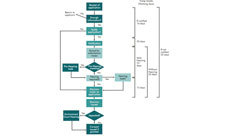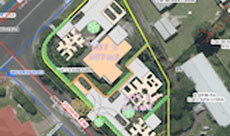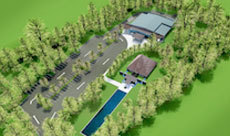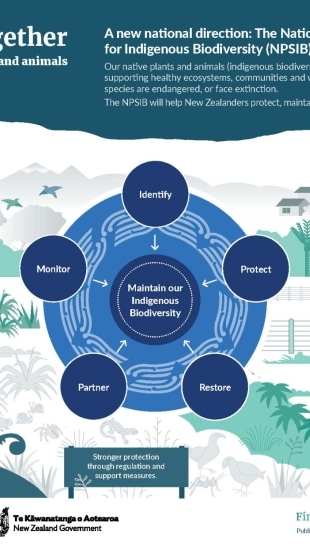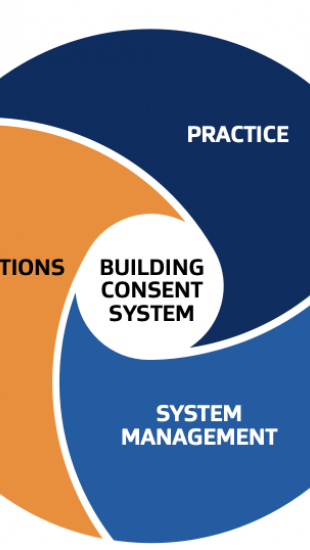The Process for Reform: RESOURCE MANAGEMENT IN NEW ZEALAND

NEW DIRECTIONS FOR RESOURCE MANAGEMENT IN NEW ZEALAND
A Government-ordered review released on 29 July 2020 has called to replace New Zealand's outdated, linchpin rulebook for the environment with two new ones – and also create legislation to deal with climate change impacts.
The top-level behind it has separately called for a shake-up of New Zealand's councils, arguing having 78 of them is "difficult to justify".
This review was conducted by the independent Resource Management Review Panel chaired by retired Court of Appeal Judge, Hon Tony Randerson, QC.
When the RMA was introduced in 1991 it contained a number of valuable principles which it is important to retain. One of these was the principle of sustainability to ensure the needs of future generations are taken into account. However, in the ensuing period of nearly 30 years, the RMA has been subjected to numerous amendments designed to improve its effectiveness but which have instead resulted in a doubling of its original length and an unduly complex patchwork of provisions.
Rather than attempt to amend the RMA, the Panel has concluded that the Act should be repealed and replaced with new legislation which we propose be named the Natural and Built Environments Act (NBEA). This would have a substantially different approach from the RMA but would also incorporate some of the key principles of the previous legislation which remain appropriate. The aim of the NBEA would be to establish more enduring solutions and bring to an end the series of ad hoc interventions that have been an undesirable feature of legislative change to date.
The independent review, commissioned by Environment Minister David Parker, explored what to do about the regulatory system built around the 30-year-old Resource Management Act (RMA).
Two major new pieces of interrelated legislation:
- the repeal of the Resource Management Act 1991 (RMA) and its replacement with new legislation we have suggested be named the Natural and Built Environments Act (NBEA). This would have a substantially different approach but would incorporate some of the key principles of the RMA that remain appropriate
- new legislation which we have called a Strategic Planning Act (SPA).
- Managed Retreat and Climate Change Adaptation Act (CCAA).

The NBEA would be the most direct replacement for the RMA, while the SPA would have the purpose of setting long term strategic goals and facilitating the integration of functions from across the resource management system (including the Local Government Act 2002, Land Transport Management Act 2003 and Climate Change Response Act 2002). If enacted the CCAA will establish an adaptation fund to enable central and local government to support necessary steps to address the effects of climate change.


The combined effect of the SPA and the NBEA would be to significantly overhaul how local authorities are expected to approach planning for natural and built environments, with a focus on closer links between land and resource planning, and associated funding and investment.
The Panel proposes a new purpose for the NBEA: enhancing the quality of the environment to support the wellbeing of present and future generations. That purpose will be achieved by promoting positive outcomes for both natural and built environments, ensuring that the use, development and protection of resources only occurs within prescribed environmental limits and that the adverse effects of activities on the environment are avoided, remedied or mitigated.
The Panel recommends that regional and district plans should be combined and replaced with a single plan for each region (Combined Plans). In effect, there will be a single unitary plan (similar to the Auckland Unitary Plan (AUP)) for every region which will reduce the number of planning documents to 14, from the more than 100 that exist now.
Also, the Combined Plans could potentially release pressure through the integration of regional council and territorial authority functions. The upfront costs associated with the development of Combined Plans will be significant.
The Panel proposes that the NBEA should focus on outcomes for the built environment, as well as the natural environment, by including provisions to ensure that there is sufficient development capacity for housing and business land.
The Panel also proposes that the NBEA should contain a more explicit focus on climate change issues. The Panel’s recommendations focus on using the NBEA to reduce greenhouse gas emissions rather than merely managing the natural hazards that result from climate change. The CCAA and NBEA together support the aim of a managed transition to a low carbon economy and are in line with recent developments in other New Zealand climate change legislation.
The Panel also proposes streamlining another arguably problematic area of the RMA: the plan preparation and change process. In particular, the Panel proposes that the Joint Committees (as discussed above) should have the authority to prepare and notify the Combined Plan. It also recommends a process similar to that used for preparing the AUP.
The Panel has also recommended clarifying the notification process by removing the 'no more than minor' effects threshold and replacing existing provisions with a combination of presumptions and plan provisions specifying when notification is to occur and in what form.

The Panel has also recommended a new separate piece of legislation which we have called the Strategic Planning Act. The purpose of the Strategic Planning Act would be to set long-term strategic goals and facilitate the integration of legislative functions across the resource management system. These would include functions exercised under the NBEA, the LGA, the LTMA and the CCRA to enable land and resource planning to be better integrated with the provision of infrastructure as well as associated funding and investment. The Panel’s consultation found strong support for greater use of spatial planning to identify areas suitable for development as well as areas or features it is important to protect. Spatial strategies developed at regional level, encompassing land and the coastal marine area, would play a critical part in delivering the outcomes intended for the resource management system.

The preparation and approval of spatial strategies under this new legislation would be the responsibility of a joint committee comprising representatives of central and local government as well as mana whenua.
This new approach to result in stronger coordination between these parties in developing long-term strategic planning for both the natural and built environments, with closer links between land and resource planning and associated funding and investment.
One criticism of the purpose of the RMA has been its focus on managing the adverse effects of activities on the environment rather than promoting more positive outcomes. The Panel proposes a new purpose for the NBEA: enhancing the quality of the environment to support the wellbeing of present and future generations. That purpose will be achieved by promoting positive outcomes for both the natural and built environments, ensuring that use, development and protection of resources only occurs within prescribed environmental limits and that the adverse effects of activities on the environment are avoided, remedied or mitigated.
Cabinet has indicated that a broad, open process of public consultation will follow its consideration of the proposals. Wide engagement with New Zealanders and stakeholders is anticipated for the introduction of any new legislation.
Reform Process
- Early 2021: Ministerial Oversight Group established which will have delegated decision-making powers to progress an exposure draft of the Natural and Built Environments Bill including development of policy and consultation material. The Ministerial Oversight Group will comprise the Ministers for/of Finance (Chair), Māori Crown Relations: Te Arawhiti, Housing, Environment, Local Government, Building and Construction, Agriculture, Transport, Conservation, Associate Environment Hon Kiritapu Allan, Associate Environment Hon Phil Twyford, and Climate Change.
- The Minister also proposes engaging with the newly formed Māori Collective (comprised of existing groups such as National Iwi Chairs Forum (through its Freshwater Iwi Leaders Group), New Zealand Māori Council, Te Wai Māori Trust, Kahui Wai Māori, and the Federation of Māori Authorities) to refine policy options as proposals are developed.
- May 2021: An exposure draft of the Natural and Built Environments Bill will be released to a select committee with supporting consultation material. The exposure draft will contain the main structure and headings of the Natural and Built Environments Bill, with certain aspects fully drafted.
- June to September 2021: A special select committee inquiry will consider this Bill. The Strategic Planning Bill and Climate Change Adaptation Bill will be developed in a parallel process with the latter managed out of the Minister for Climate Change office.
- Dec 2021: The Natural and Built Environments Bill and the Strategic Planning Bill will be introduced to Parliament in late 2021. A standard select committee process will consider the final versions of the Natural and Built Environments Act and the Strategic Planning Act. Consultation on the Climate Change Adaptation Act will be done separately to this at this stage.
- December 2022: It is intended that all three pieces of legislation are passed by the end of 2022.
The Process for Reform
An unusual but appropriate form of public engagement will be undertaken before draft legislation has its first reading in Parliament. An “exposure draft” of the NBA (Natural and Built Environment Act) will be prepared first, along with consultation material, and this material will be subject to an enquiry undertaken by a select committee, which will then make recommendations. The select committee will be supported by advisors, seek public submissions, and undertake hearings.
The exposure draft will contain the structure of the NBA and indicative headings, with certain aspects drafted to reflect policy decisions made in the cabinet paper, and other delegated decisions made by “Ministerial Oversight Group” (MOG), which will refine policy decisions made in the cabinet paper, make further policy decisions for the draft and consultation material. The scope of the MOG includes policy and process decisions needed to progress remaining content of the NBA bill.
MfE will be the lead agency for the NBA, and the MOG will receive joint agency advice rather than differing positions. The cabinet paper states that “a more formal process may be needed to progress the SPA”, due to its connections with legislation.
The Cabinet Decision Minute notes that “a special process will be used to develop the NBA, and the SPA and CAA developed in parallel”.
Initial In-Principle Policy Decisions
A number of key debates are signalled and triggered by changes suggested by the Minister to the recommendations made by the RM review panel. These include:
- NBA purpose and supporting provisions. The Minister adopts the panel’s indicative drafting, but makes specific changes. For example, the Minister proposes changes to the purpose of the NBA, suggests how the purpose might be achieved, and uses words that were not in the RM review panel recommendations. In giving effect to the principles of the Treaty, wording is suggested to avoid a ‘veto’ for maori interest and ensure principles of the treaty and the purpose of the NBA are met concurrently. There is also discussion in the cabinet paper on outcomes and biophysical bottom lines. Thus at the top level, set out in the NBA, are: biophysical bottom lines; positive outcomes; and giving effect to the Treaty.
- National Planning Framework. Those three purposes would be driven by central government direction under the NBA provisionally called the National Planning Framework. This would include and replace existing national direction, combining functions of existing NPS’s, NES’s and most regulations and national planning standards.
- Natural and Built Environments Plans. The Minister/Cabinet decision is that there will be “one planning document per region”, and that “planning under the NBA should be based on strong national direction and integrated planning within regions”.
Comment: The Cabinet minute also refers to “one planning document per region”. Appendix 1 of the cabinet paper provides illustrative drafting of the NBA purpose and supporting provisions. Under the outcomes section a “placeholder clause to link to the SPA” is inserted: “When providing for outcomes in (1) local authorities must provide for the applicable regional spatial strategies prepared under the Strategic Planning Act.” There appears to be no mention of regional spatial plans in the Cabinet paper.
Supporting Implementation and Transition
The cabinet paper refers to past issues such as insufficient national direction, no template plan formats, and insufficient funding for the Environment Court. It indicates that resourcing and support will be required for: developing model combined plans; consolidating national direction into the National Planning Framework; incorporation of matauranga Maori; capacity and capability building; improved monitoring and reporting.
The Cabinet report notes that, so far, no Regulatory Impact Assessment (RIS) has been submitted for these proposals, although Cabinet’s impact analysis requirements apply. It states that an interim RIS will be provided to cabinet when it considers the NBA exposure draft prior to release.

